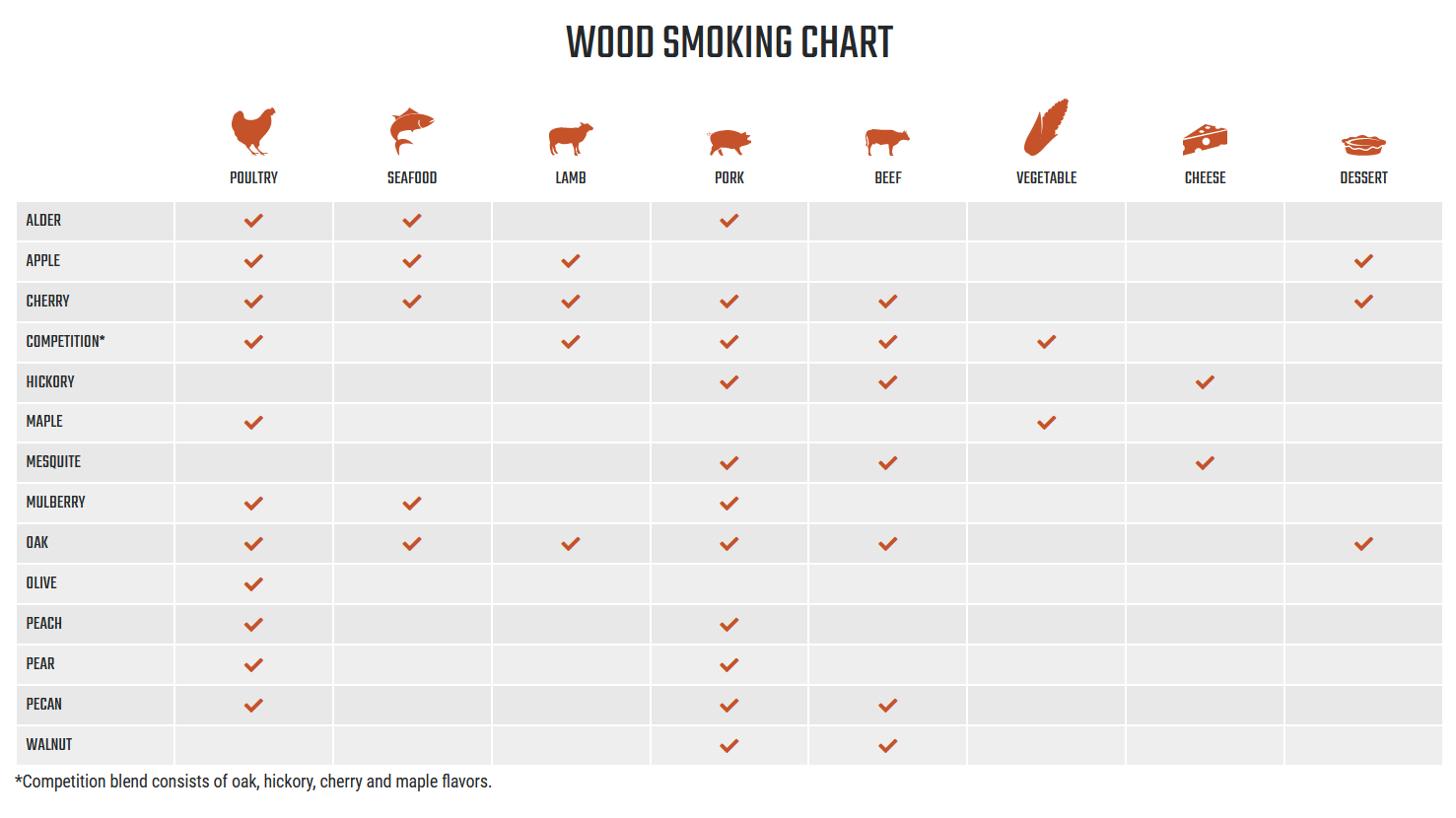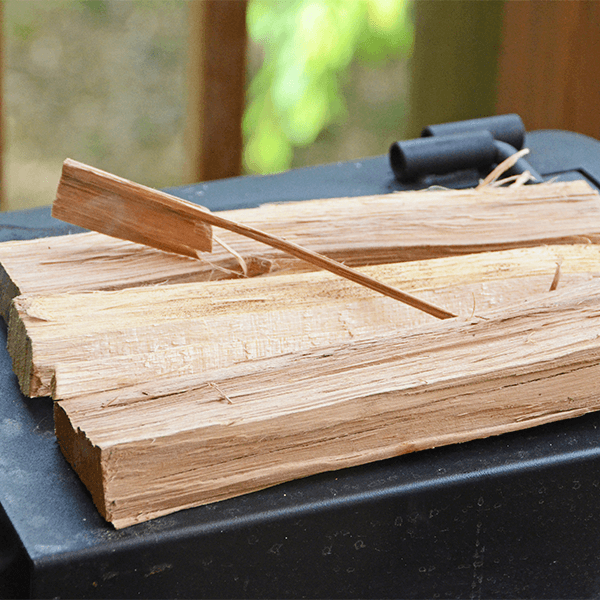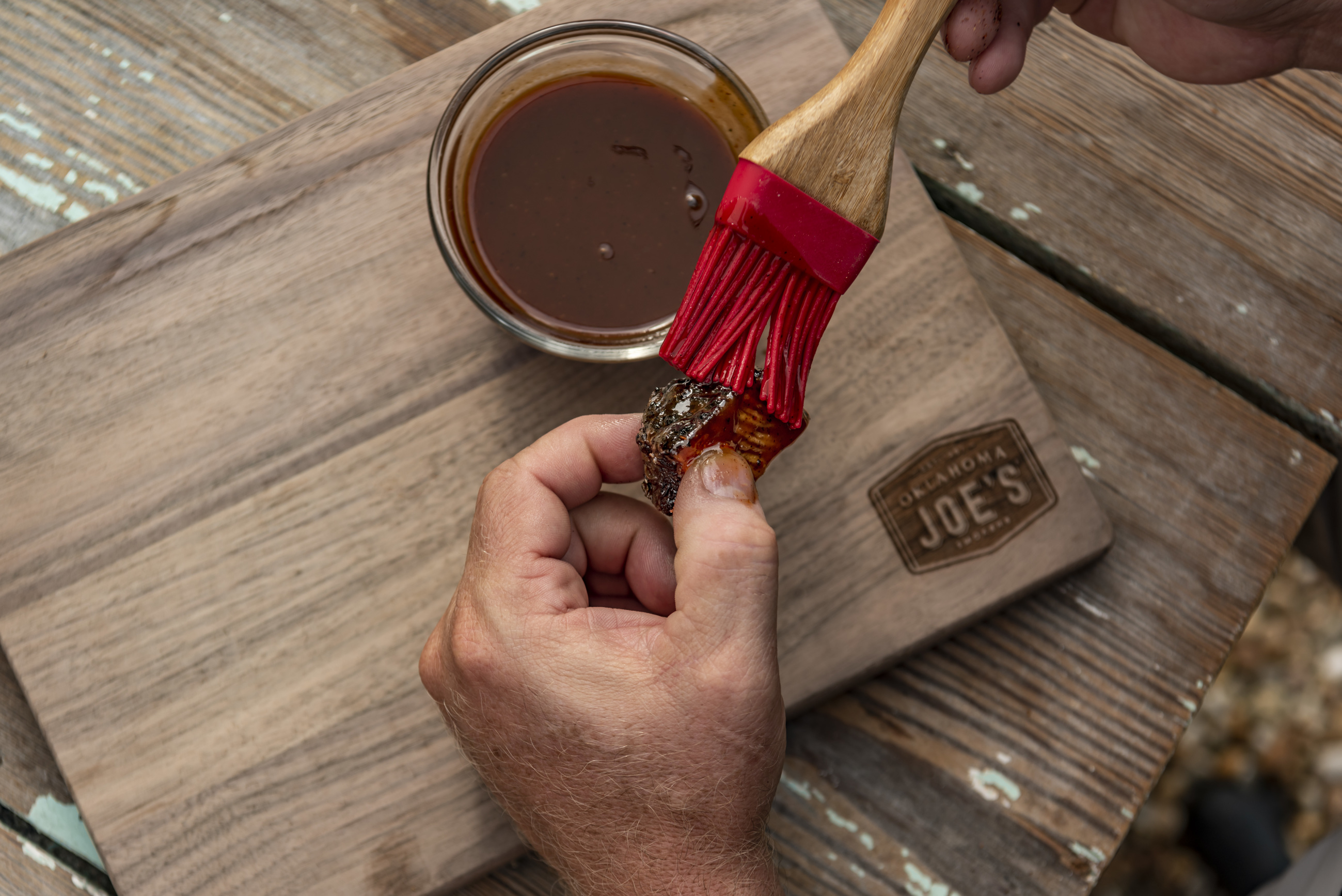How to Pick the Best Smoking Wood
When it comes to selecting the best wood for smoking, each wood has unique flavor characteristics that enhance the flavor of your food. Depending on what type of food you’re planning to smoke, you’ll want to pick the wood that most closely matches its flavor profile. Using smoke as a flavor ingredient means you can experiment with different wood and meat combinations until you find your match made in BBQ heaven.
What is the best wood for smoking food?
This is one of those debates that has raged on for years and will likely continue for many more. As always, the best wood for smoking food is the wood that you, your family and friends like best. For example, when it comes to smoking heavier meats, like beef and pork, hardwood is recommended. For more delicate meats, like chicken and fish, a lighter hardwood or fruity wood is advised.
A great way to infuse flavor into your food, smoking wood is available in many different flavors and several different forms. Learn all about it here as we get into more of the details and start adding new flavors to your food.
Wood Splits, Chunks, Chips & Pellets
Smoking wood is available in four different forms; pellets, chips, chunks or splits (small logs). Wood pellets are designed to fuel pellet grills but can also be used in smoker boxes. Wood chips are usually reserved for short cooks like fish, poultry and smaller cuts of meat since they burn up more quickly than chunks. Wood chunks and splits are good for cooks that take hours to finish like pork shoulder, brisket, ribs and larger cuts of meat.
Ideally, you want to add fuel as seldom as possible during your cook to avoid disrupting the process. Take care not to use too much wood, especially with stronger-flavored woods. For example, a handful of wood chips is often enough for a short smoking session. Start longer smoking sessions with a few chunks or a split, adding more wood, only as needed.
what can you cook with fruit woods?
Wood from trees that bear fruit have the lightest flavors. Apple and cherry are the most commonly used fruit woods. They work particularly well with delicate foods, milder fish and cheeses. They will also do a great job on pork, beef and lamb because they bring a sweetness that complements all of these meats.
Apple: Apple wood has a mild, sweet & fruity profile. Although it can be used to smoke virtually anything, it imparts a milder smoke flavor that’s a better choice for pork, poultry and fish. However, it can overwhelm poultry if smoked for too long.
Cherry: Cherry wood delivers a mild to medium smoke that is sweet, slightly fruity and blends well with oak wood. Cherry is an excellent wood for smoking pork, lamb, beef, dark poultry like duck and other gamey meat.
which hard woods are most suitable for cooking?
Hard woods burn slower, longer and hotter than softwoods. They are preferred during long cooks because they add better flavor to meats. Hickory, oak, maple, pecan and alder are all hardwoods. Pork responds very well to hickory and maple smoke. Maple goes well with veggies and cheese and both woods are good with poultry. Oak has flavors that are good with beef, especially brisket and sausages. Pecan wood is kind of a hickory-light, imparting an almost identical flavor profile but milder. Alder is the softest of the hardwoods with a light, delicate flavor.
Alder: Alder wood imparts flavor similar to fruit woods with a more delicate sweetness. It works well for smoking seafood and other delicate foods.
Hickory: Hickory is probably the most popular smoking wood. More intense than the fruit woods, it has a smoky, spicy flavor and is great on beef and pork but can be too heavy for chicken.
Maple: Maple wood gives a more subtle, mild and sweet smoky flavor that blends well with woods like alder, oak and apple. It’s ideal for smoking pork and poultry. Sugar-maple is exceptionally good for smoking turkey.
Mesquite: Mesquite is the most intense and concentrated, earthy smoke flavor you will find. It should only be used when you want a really bold smoky flavor. It’s best when used to smoke large cuts of beef and pork.
Oak: One of the most popular smoking woods, oak is less intense than hickory with a medium earthy smoke profile. It’s great on pork, beef, poultry and virtually anything, depending on how much smoke flavor you want.
Pecan: Similar to hickory with a nutty aroma that mixes well with fruit woods, pecan wood is primarily used for smoking poultry.
Which soft woods are the best for cooking?
Softwoods like pine and cedar are not suitable for smoking food because they’re too resinous which can cause flare-ups and infuse odd flavors that don’t pair well with food. Higher sap content can not only ruin your food, it can ruin your smoker. They also burn too quickly.
Which wood gives the strongest smoky flavor?
Hickory gives meat the strongest smoky flavor of all cooking woods. It’s great to use when smoking beef and pork low and slow. Also, very strong, mesquite gives you a good flavor quickly, but mesquite can become bitter fast too. It’s better to use mesquite for hot and fast cooks. While fruity smoking woods can come off as too mild, some hardwoods can come off as too strong. A slightly less intense smoky flavor still gives great results, but too much smoke can cause food to taste bitter.
What type of wood is best for smoking meat?
Oak is a very popular wood for smoking meat. It imparts a heavy smoky flavor, most often used when smoking pork, fish, sausages, brisket and red meat.
What is the best wood for smoking steak?
If you want a bold smoky flavor for your steak, use mesquite, hickory or oak wood. These woods all add amazing flavor to steak. If you prefer a milder smoked flavor with vibrant color, use cherry wood to give your steak its wood-fired flavor. The steak will not only taste great, it will look incredible too. When you want a simple, mild smoke flavor, go with alder, pecan or maple.
wood smoking chart
Now that you're an expert on all things smoking wood, use this chart as a quick reference guide when you're preparing a feast of your own.





